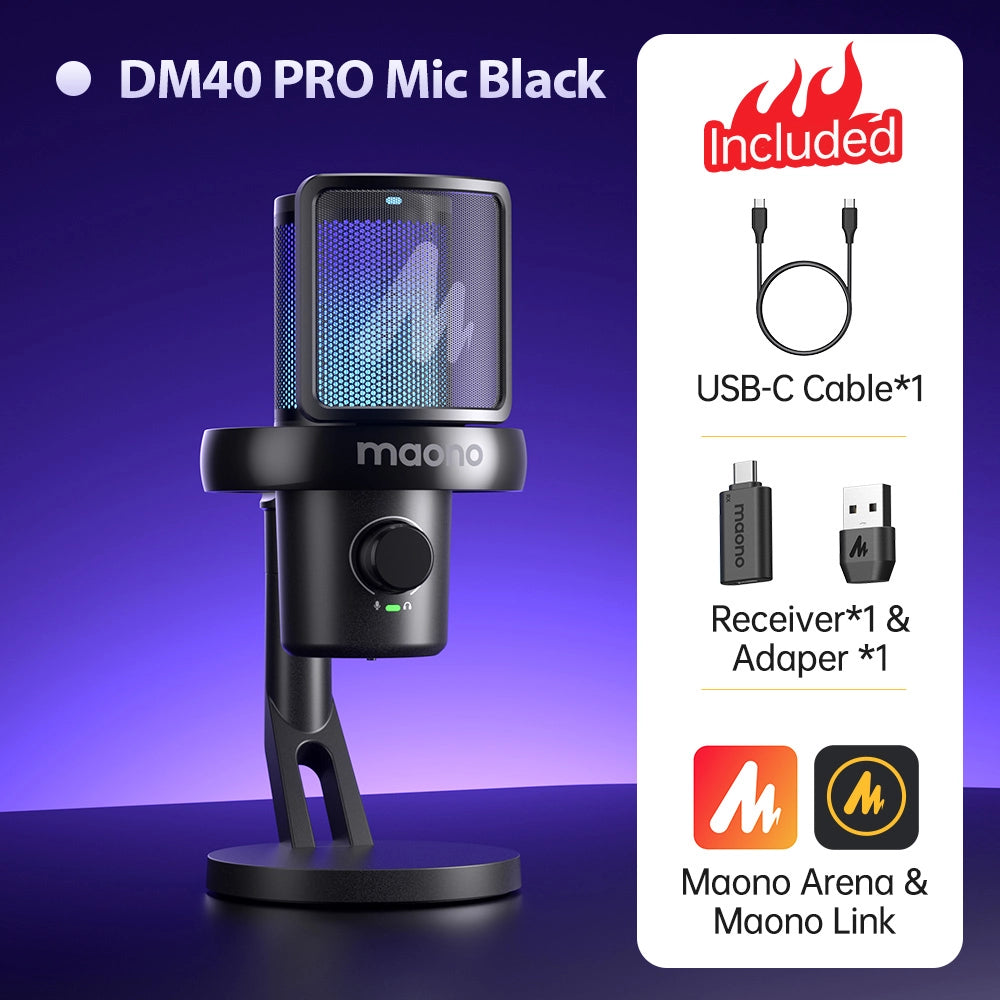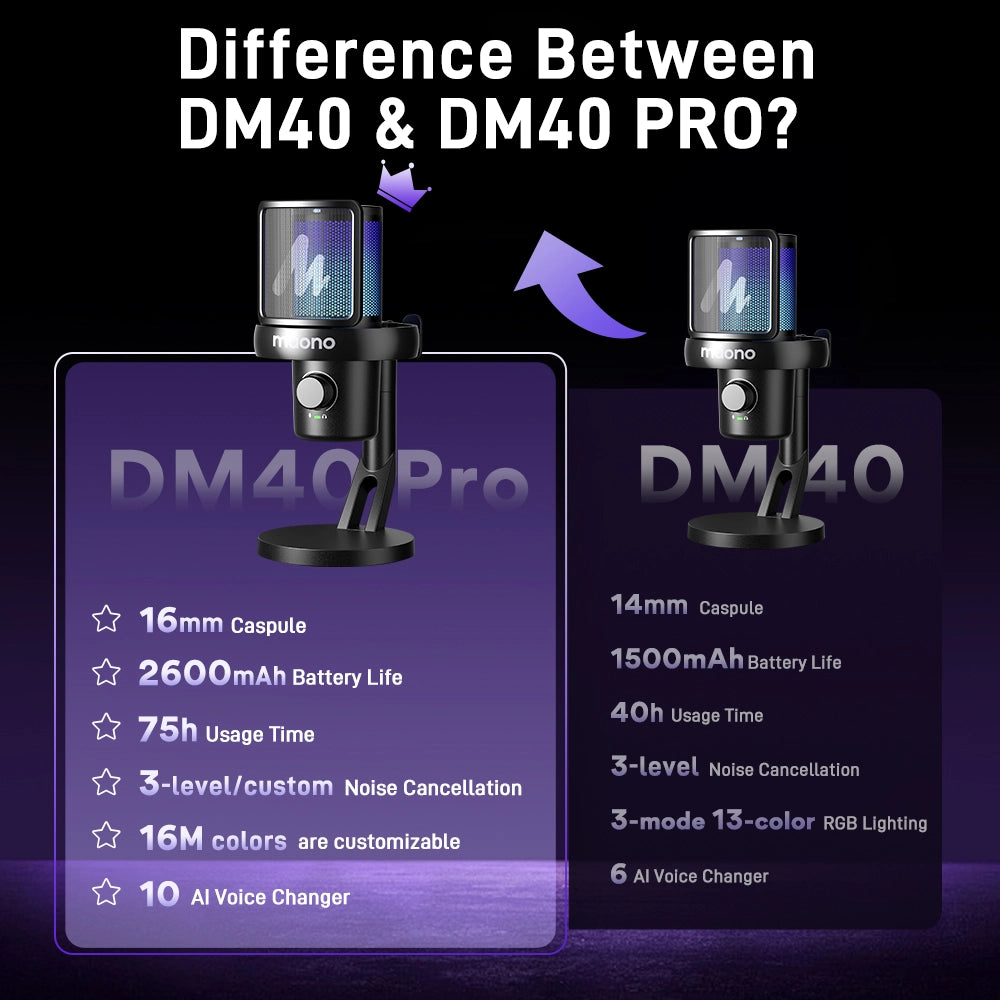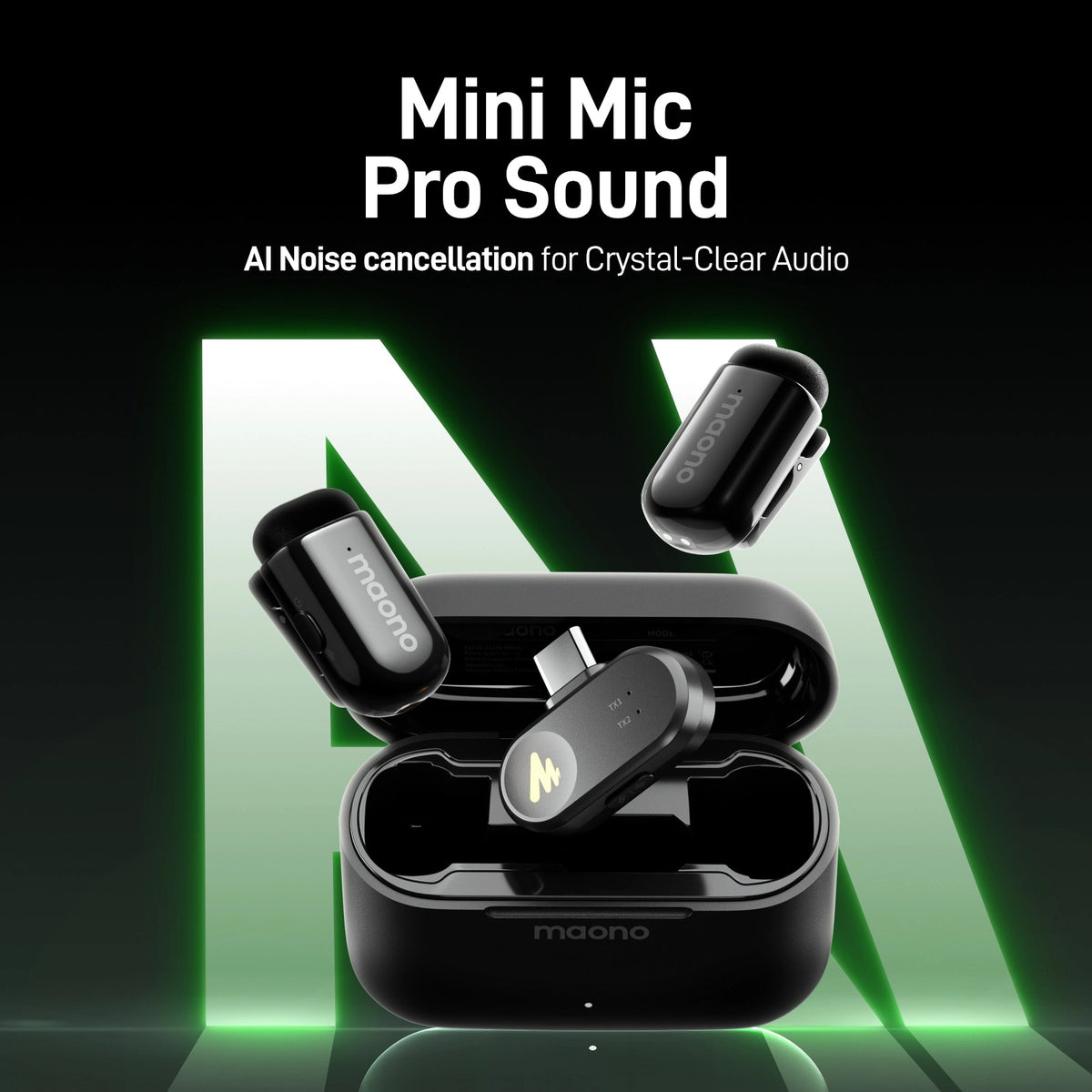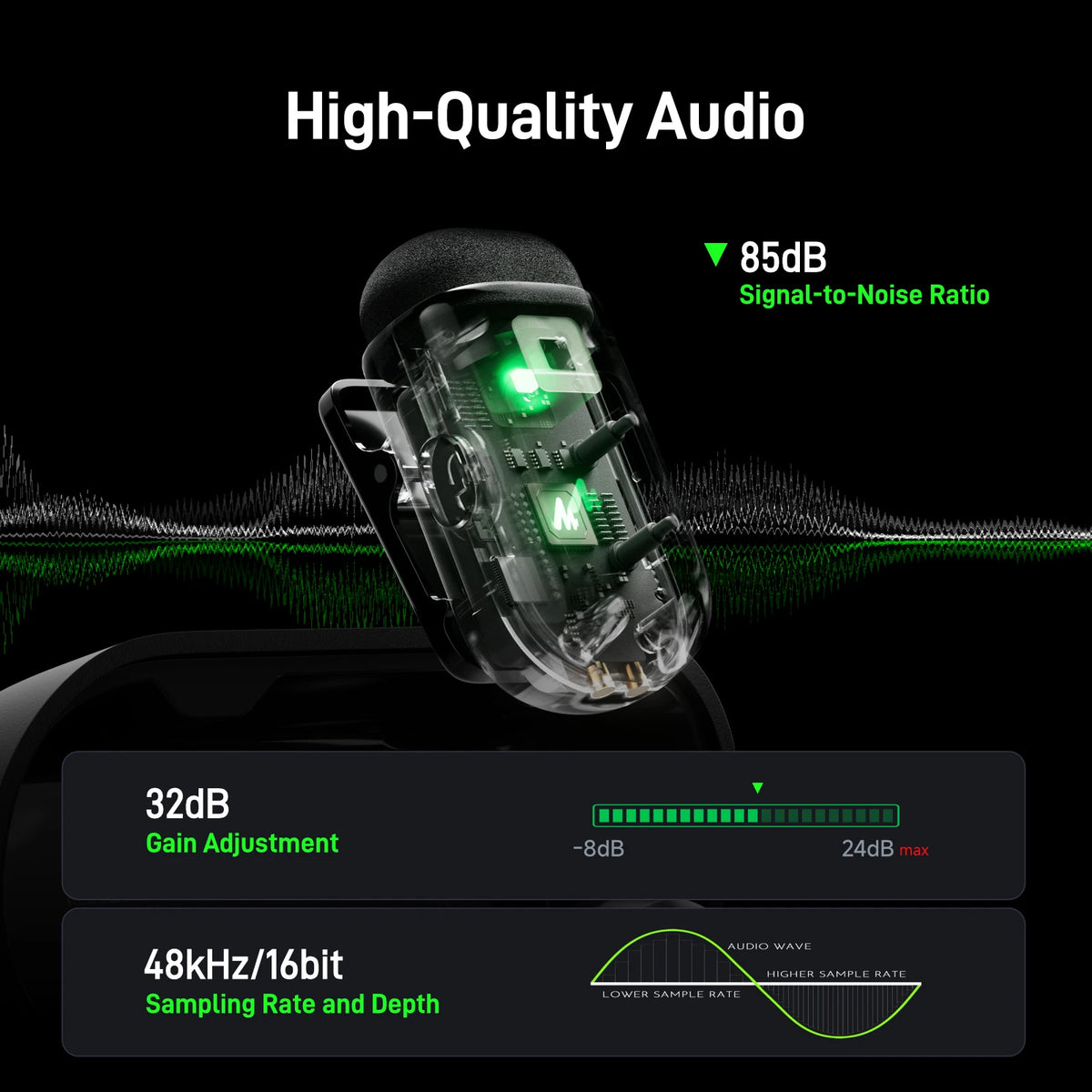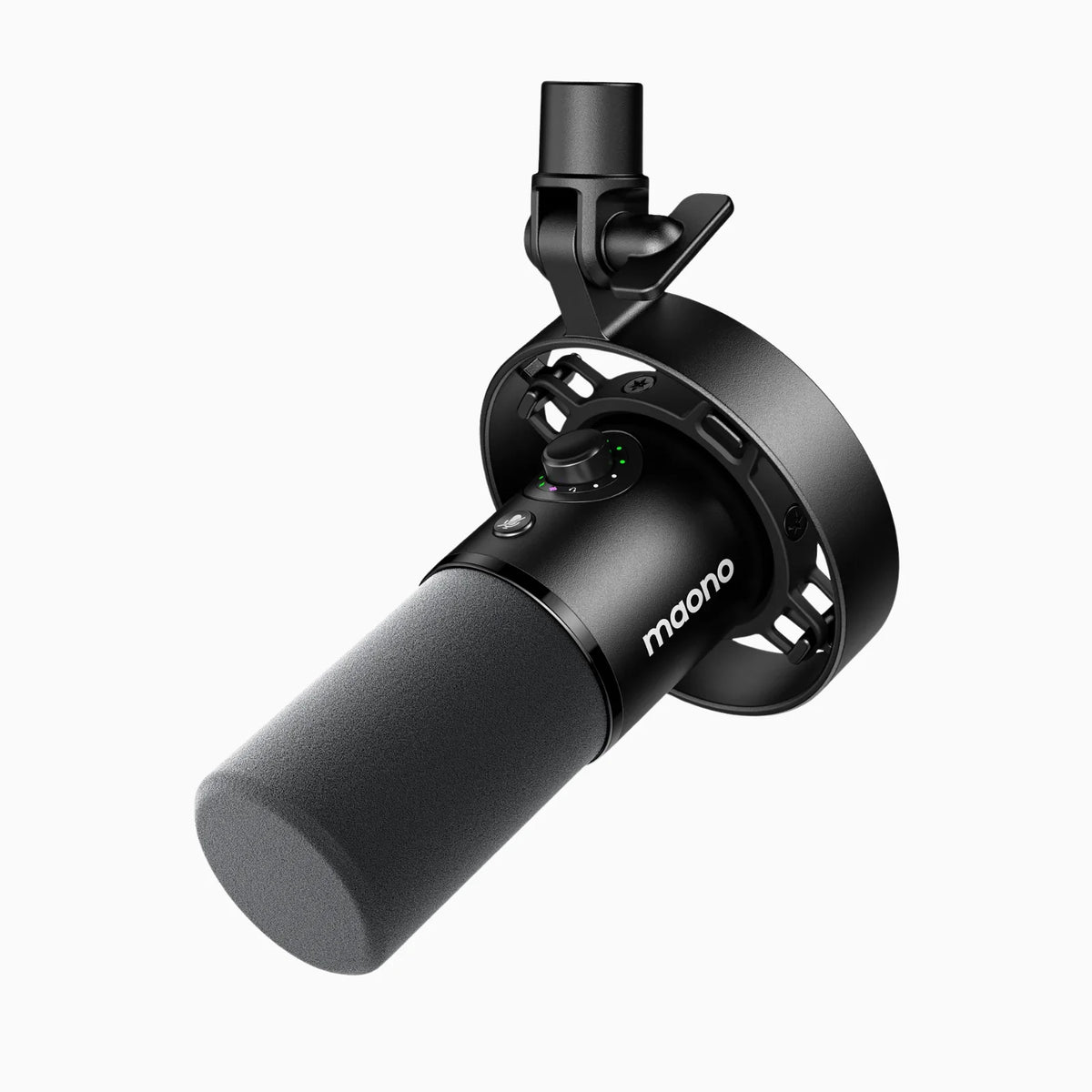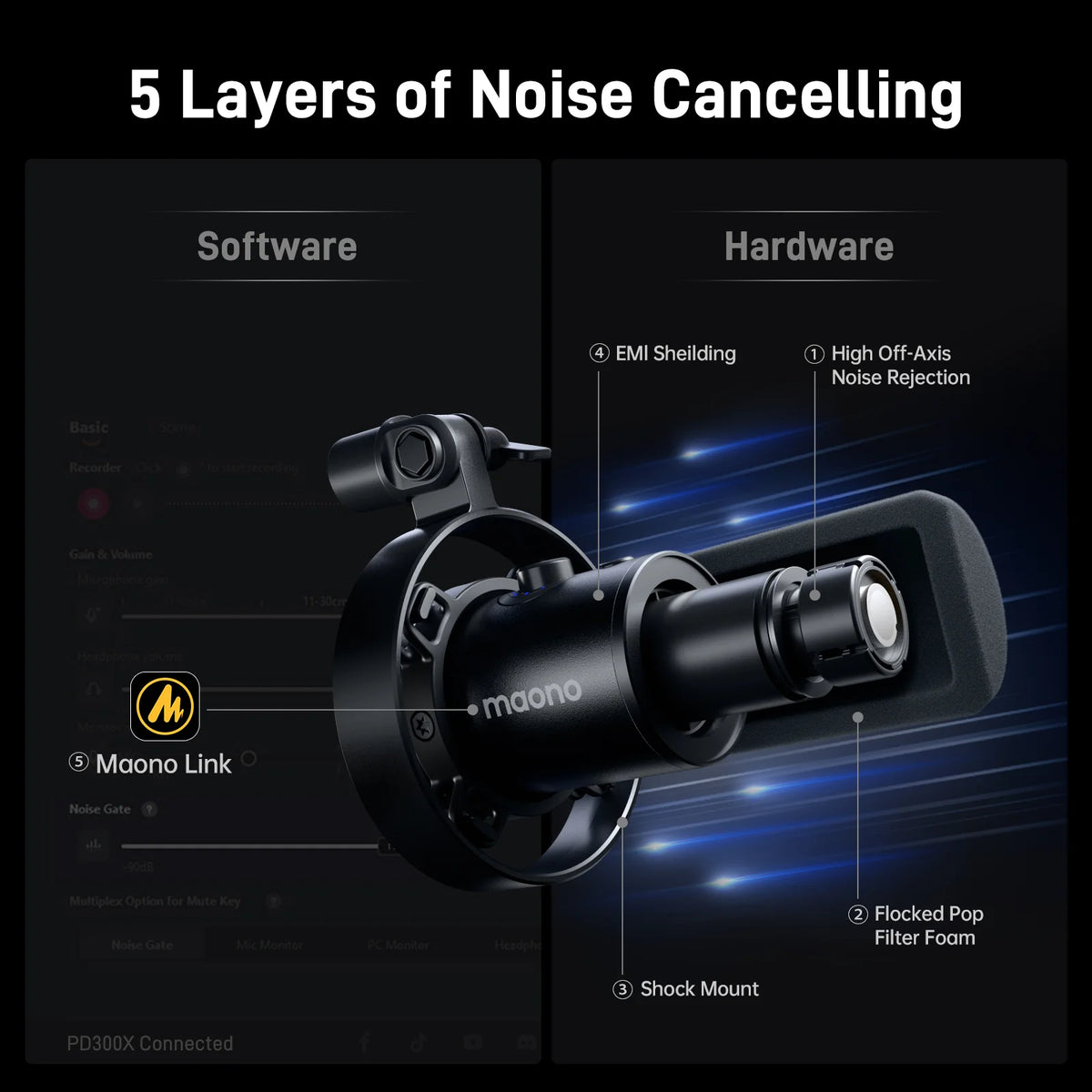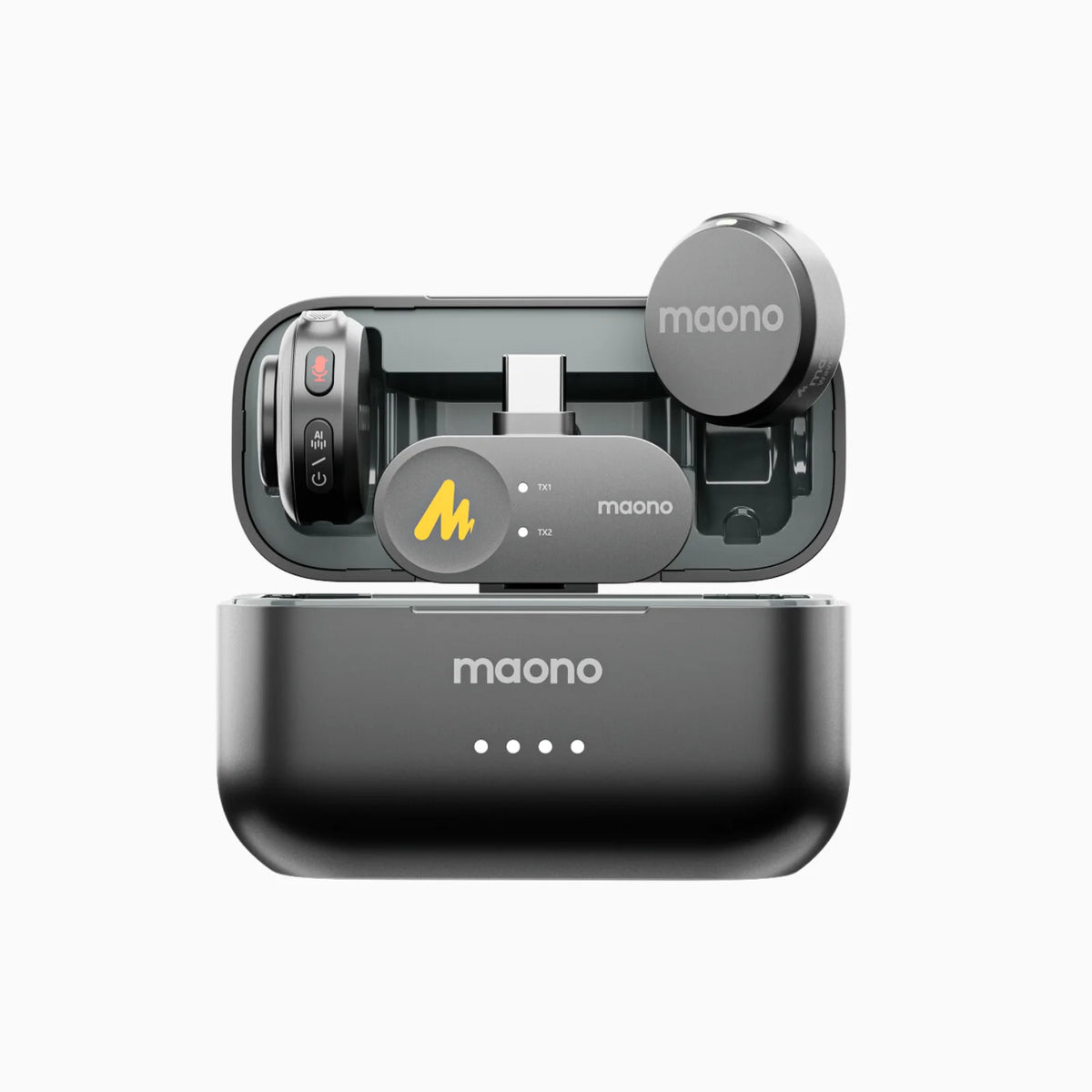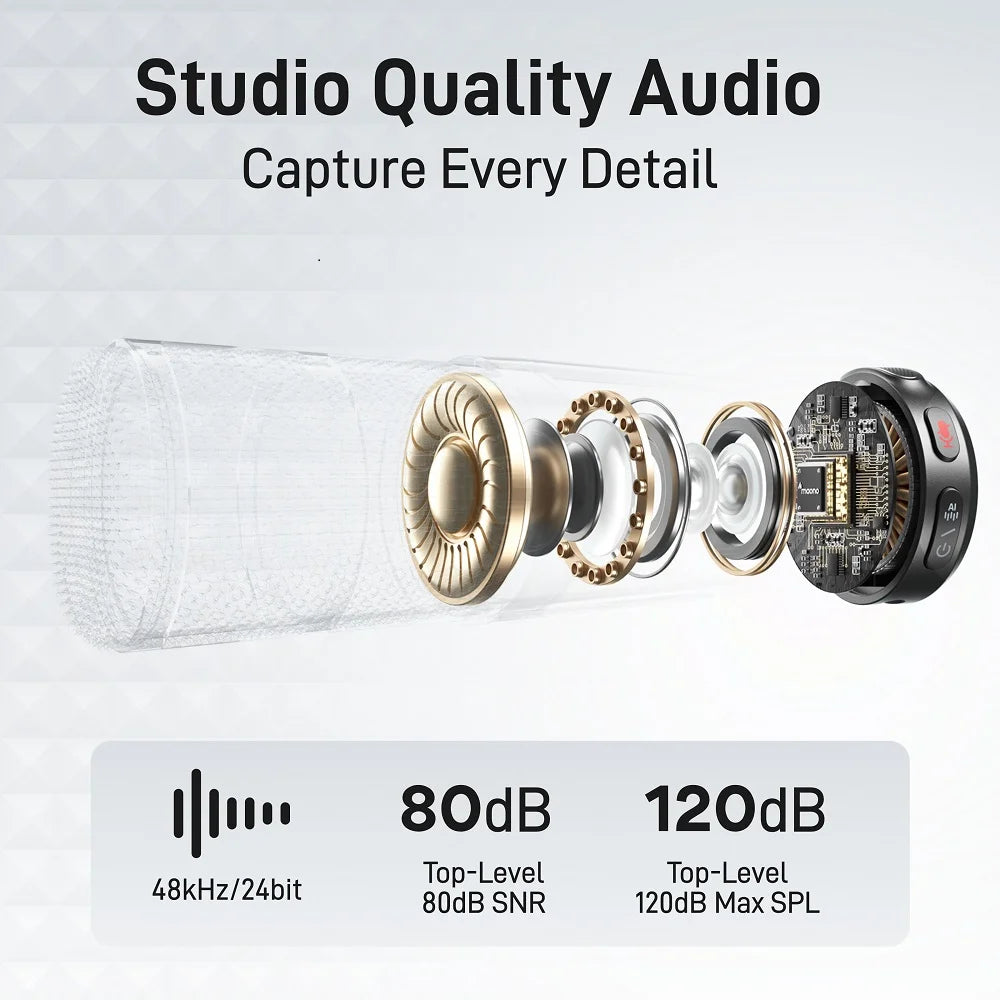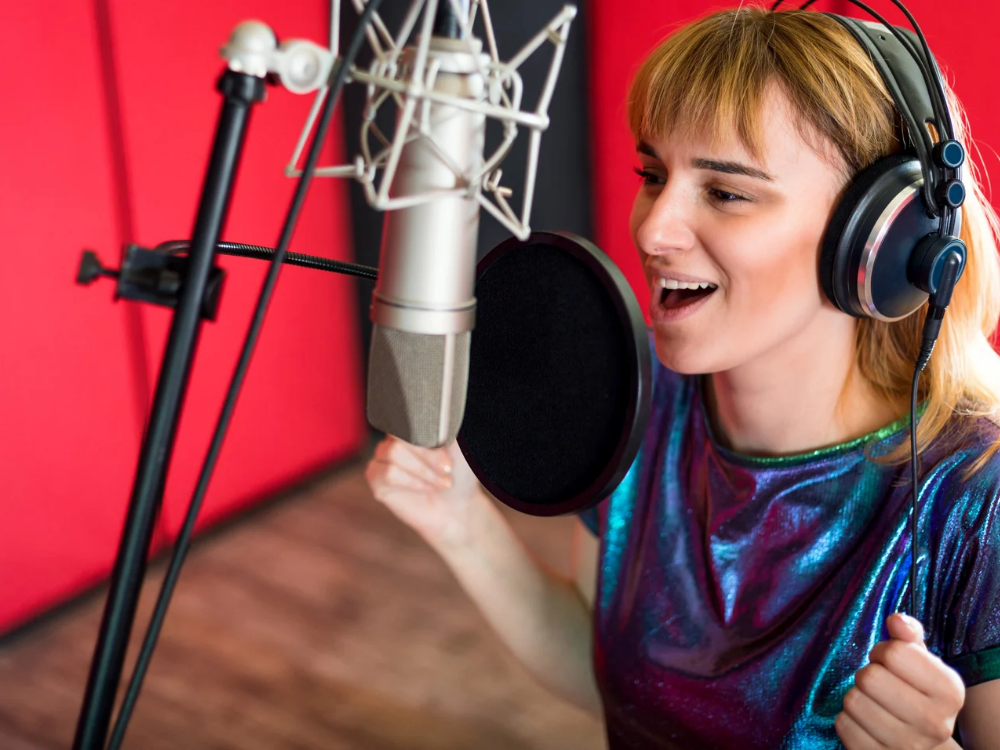Whether you're setting up a professional studio or recording at home, getting crystal-clear audio is a game-changer. The secret weapon? An XLR condenser microphone. These microphones are the backbone of high-quality sound in music production, podcasting, and voiceovers, delivering unparalleled clarity and depth. But with so many options on the market, how do you choose the best one?
The choice of microphone is critical when recording high-quality audio, whether in a professional studio or at home. One of the most popular types of high-fidelity sound recording is the condenser microphone XLR. Known for their ability to capture detailed and nuanced sound, these microphones are widely used by vocalists, musicians, podcasters, and sound engineers. Let's explore the top XLR condenser microphones of 2024, from industry legends like Neumann to rising stars like Maono, and find the perfect fit for your setup.
What's an XLR Condenser Microphone? What Is It Used For?
An XLR condenser microphone is a type of microphone that uses a capacitor (or condenser) to convert sound into electrical signals. This design enables it to capture a wide frequency range with exceptional clarity. Unlike dynamic microphones, condensers are more sensitive and can pick up even the most subtle details in sound, making them ideal for vocal recordings, acoustic instruments, and podcasting.
The term "XLR" refers to the type of connection these microphones use. An XLR cable is a balanced, three-pin connector that reduces electrical interference, ensuring clean and uninterrupted audio transmission. This type of connection is also more secure than USB or 1/4” connections, making it the industry standard for professional recording studios.
Condenser Microphone vs. Dynamic Microphone: Which One Is Better?
The debate between a condenser microphone vs dynamic microphone is common among audio professionals. Each has its advantages and ideal use cases.
- Condenser Microphones: Best for studio recordings where detail and accuracy are crucial. They are more sensitive to sound and can capture higher frequencies with greater clarity. However, they require phantom power to operate, usually supplied through an audio interface or mixer.
- Dynamic Microphones: Ideal for live performances or environments with high sound pressure levels (e.g., guitar amplifiers or drums). They are more rugged and durable, making them great for on-stage use. However, they lack the high-end sensitivity of condensers.
What Are the Best XLR Condenser Microphones?
Choosing the best XLR condenser mic depends on the specific application. Some are better suited for vocals, while others excel with instruments or podcasting. Let's dive into the top 7 XLR condenser microphones of 2024, featuring models from industry leaders like Neumann, Audio-Technica, AKG, Shure, Rode, and Maono.
Top 7 XLR Condenser Microphones for 2024
1. Neumann U87 Ai
The Neumann U87 Ai is widely regarded as the gold standard of condenser microphones. Known for its smooth frequency response and superior build quality, this microphone is a favorite among professional studios for vocal recording. It features three switchable polar patterns (cardioid, omnidirectional, and figure-8), making it incredibly versatile for different recording scenarios.
- Pros: Exceptional sound clarity, versatile polar patterns
- Cons: Expensive
- Price: Around $3,200-$3,750
2. Audio-Technica AT2035
The Audio-Technica AT2035 is a more affordable option that still offers excellent performance for both home studio and professional use. It features a large diaphragm, providing detailed sound capture for vocals, podcasts, and instruments. The built-in 80Hz high-pass filter and -10dB pad give it flexibility for recording loud sources without distortion.
- Pros: Affordable, built-in high-pass filter and pad
- Cons: Lacks the high-end clarity of pricier models
- Price: Around $$149 to $150
3. AKG C414 XLII
The AKG C414 XLII is another industry favorite due to its incredible versatility. This microphone offers nine different polar patterns, making it suitable for nearly any recording application. Whether you’re recording vocals, instruments, or an ensemble, the C414 delivers crystal-clear sound and precision.
- Pros: Multiple polar patterns, excellent sound accuracy
- Cons: Complex settings may be overwhelming for beginners
- Price: Around $1,300 to $2,299.98
4. Shure SM7B
Although technically a dynamic microphone, the Shure SM7B is often compared to condenser microphones due to its studio-quality sound. It’s particularly beloved by podcasters, voiceover artists, and vocalists. It offers incredible clarity, minimal background noise, and a rich, warm tone.
- Pros: Durable, excellent for vocals and spoken word
- Cons: Requires high gain; might need a preamp
- Price: Around $399 to $400
5. Rode NT1-A
The Rode NT1-A is famous for its ultra-low noise level, making it one of the quietest condenser microphones on the market. This makes it ideal for studio vocal recording, where clarity and detail are paramount. It also comes with a complete recording kit, including a pop filter, shock mount, and XLR cable.
- Pros: Low noise, budget-friendly, comes with accessories
- Cons: Not as versatile as higher-end models
- Price: Around $250 to $318.95
6. Maono PM320

Maono is known for delivering high-quality audio equipment at affordable prices, and the Maono PM320 is no exception. This XLR condenser microphone features a cardioid polar pattern, making it perfect for isolating vocals or instruments in a home studio setup. Its build quality and sound capture rival much pricier microphones. PM320 has a large 16mm diaphragm that captures detailed audio with minimal background noise.
Notable Features:
- High-sensitivity mic with clear, natural sound quality, perfect for vocals and instruments.
- Comes as a full kit, including a windscreen, pop filter, shock mount, and XLR cable, making it ready for studio use.
- Pros: Budget-friendly, excellent for beginners and professionals, ideal for professional audio interfaces
- Cons: Requires an audio interface with phantom power, limiting plug-and-play convenience
- Price: Around $65.99
7. Maono PD100X

Another great model from Maono, the PD100X, offers dual connectivity (USB and XLR), making it versatile for use with computers and professional audio setups. It's a dynamic mic that handles loud environments well, making it suitable for streamers and podcasters.
Notable Features:
- The mic offers onboard controls like gain adjustment and a mute button for easy, real-time sound management.
- LED indicator shows operational status, useful for streamers during live sessions.
- Pros: Convenient USB and XLR options provide flexibility for different setups, Low self-noise, and good rejection of background noise due to the cardioid pattern
- Cons: Slightly reduced frequency range compared to condenser microphones, which might affect capturing the finest details in some vocal recordings
- Price: Around $59.99
Can You Connect a Condenser Microphone to an XLR Cable?
Yes, condenser microphones are typically designed to be connected via an XLR cable. This allows for balanced audio transmission, reducing noise and interference. However, keep in mind that condenser microphones require phantom power (usually 48V), which is supplied through the XLR connection from your audio interface or mixer.
Which Is the Best Condenser Microphone for a Female Voice?
While every voice is different, the Neumann U87 Ai and Rode NT1-A are particularly well-suited for capturing the natural warmth and clarity of female vocals. The AKG C414 XLII also excels in this area, as it allows for flexible polar pattern selection and a bright high-end response that can flatter female vocals.
FAQs
1. How to Choose the Right XLR Condenser Microphone?
When choosing an XLR condenser microphone, consider the following:
- Purpose: Are you recording vocals, instruments, or podcasts?
- Budget: High-end microphones like the Neumann U87 Ai offer excellent quality but come at a steep price. If you're just starting out, budget-friendly options like the Maono PD100X/PM320 or Audio-Technica AT2035 are great.
- Features: Consider features like polar patterns, noise levels, and sensitivity.
- Accessories: Some microphones come with kits that include shock mounts, pop filters, and XLR cables.
2. How Do You Set Up a Maono XLR Condenser Mic with an Audio Interface?
Setting up a Maono XLR condenser microphone with an audio interface is straightforward:
- Connect the microphone to the audio interface using an XLR cable.
- Make sure your interface provides phantom power (48V).
- Adjust the gain on your interface to ensure you're not recording too quietly or too loudly.
- Use monitoring headphones to check the sound quality before recording.
3. What Are Some Tips for Optimizing Sound Quality with XLR Condenser Mics?
- Use a pop filter to reduce plosive sounds.
- Position the microphone properly—ideally, 6-12 inches away from the sound source.
- Reduce background noise by recording in a quiet, treated room.
- Adjust the gain on your interface to prevent clipping or distortion.
Final Thoughts
Choosing the right XLR condenser microphone can make a world of difference in your audio recordings. Whether you're a seasoned studio professional or a beginner building a home studio, the Neumann U87 Ai, Rode NT1-A, and Maono PM320, or the PD100X offer options for every budget and application. When selecting the best microphone for your needs, consider factors like polar patterns, price, and intended use.
In 2024, these top picks stand out as the best XLR condenser microphones available, ensuring high-quality sound for all your recording projects.










